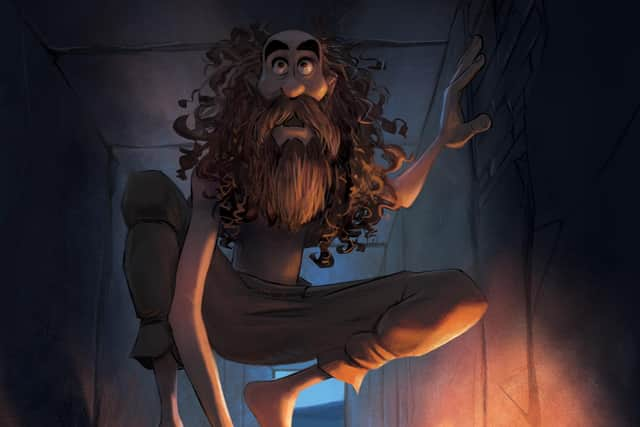Scotland's archaeologists up for awards as thousands of years of past revealed
Now some of the most important ongoing projects in the country have been recognised by the nominations of the highly-respected Current Archaeology awards.
Nick Card of University of Highlands and Islands has been nominated for Archaeologist of the Year for his work at Ness of Brodgar, an excavation that he set up 20 years ago at the site of the remarkable complex of Neolithic buildings in Orkney. Next year will see the last excavation on the site.
Advertisement
Hide AdAdvertisement
Hide AdMr Card, director of the Ness of Brodgar excavation, which has also been nominated in the Research Project of the Year award, said: “To be nominated for two Current Archaeology awards in the same year is a tribute to the whole Ness team and the last twenty years of hard work uncovering a 5,000-year-old Neolithic complex unlike anything else discovered in Atlantic Europe.


"Over this time the Ness has developed from a small-scale excavation into an internationally recognised research project that has changed many of our perceptions of the Neolithic period, both in Orkney and further afield. Many of the discoveries are unique, for instance the scale, complexity and concentration of these monumental buildings, and the quantity and quality of the finds, such as the largest assemblage of Neolithic art in Northern Europe.
"As we enter our final season of actual excavation and a new phase of intensive post-excavation analysis and publication, the awards would be a fitting celebration of all that has been accomplished.
Also shortlisted for best research project is Matt Ritchie, archaeologist at Forestry and Land Scotland for his booklet The Bare Bones which looks at the megalithic monuments built by descendants of the early Neolithic pioneers in south west Scotland and the north of Ireland after 4,000BC.
He said: “Their architecture suggests their use both as a place for the dead, where people placed the deceased within the chambers inside the cairn; and as a place for the living, where people could pay their respects within the forecourt outside the cairn. The six thousand year old ruins remain an important connection between people and land – places to remember, then and now”.
Excavations at the Knowe of Swandro on the isle of Rousay – where Pictish life gave way to the Viking age – have been shortlisted for the Rescue Project of the Year award. Dr Stephen Dockrill and Dr Julie Bond of Bradford University, along with their team, have highlighted the impact of coastal erosion and rising tides on archaeology.
Dr Dockrill said: “This nomination means a great deal to us as we have been working on this settlement site dating to the Iron Age to the Norse period since 2010. The boulder beach has revealed an extensive village around a monumental roundhouse which is being destroyed by every tide. As a rescue project we are truly excavating on the tidal edge.”
In the Book of the Year category, Professor Gordon Noble and Dr Nicholas Evans of Aberdeen University have been shortlisted for their work Picts: Scourge of Rome, Rulers of the North which looks at the major legacies left behind by the Picts who emerged around 300 AD before disappearing around the end of the first millennium.
Comments
Want to join the conversation? Please or to comment on this article.